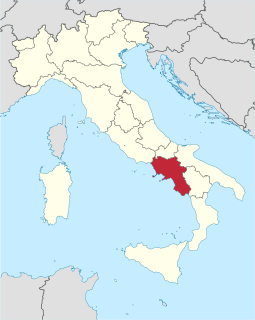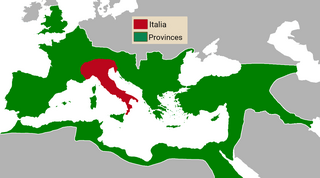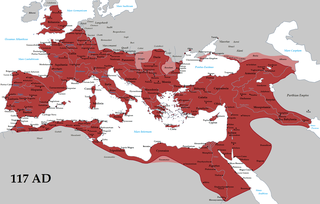The gens Artoria was a minor plebeian family at ancient Rome. Few members of this gens are mentioned in history, but a number are known from inscriptions. Under the later Empire at least some of them were of senatorial rank.
The gens Accia was a Roman family during the late Republic. The gens is known primarily from two individuals, Lucius Accius, a tragic poet of the second century BC, and Titus Accius, best known for his prosecution of Aulus Cluentius Habitus in Cicero's oration Pro Cluentio. Other Accii are known from inscriptions.
The gens Acutia was a minor plebeian family at Ancient Rome. Members of this gens are mentioned from the early Republic to imperial times. The first of the Acutii to achieve prominence was Marcus Acutius, tribune of the plebs in 401 BC.
The gens Matrinia was a plebeian family at Rome. Members of this gens are first mentioned toward the end of the second century BC. They belonged to the equestrian class. Several of them are known through the writings of Cicero, while others are mentioned in inscriptions from Umbria and Etruria.

The gens Mutia was an obscure plebeian family at Rome. None of its members is known to have held any magistracy, but many are known from inscriptions, including a large number of freedmen.
The gens Occia was a minor plebeian family at Rome. Members of this gens are first mentioned under Tiberius, but must have been at Rome for much longer; for Tacitus speaks of Occia, a Vestal Virgin who died in AD 19, after serving faithfully for fifty-seven years. A few of the Occii pursued political careers in this period, but most are known only from inscriptions.
The gens Opetreia was a plebeian family at Rome. No members of this gens are known to have held any important magistracies, but a number of them are found in inscriptions.

The gens Petillia or Petilia was a plebeian family at ancient Rome. Members of this gens first appear in history at the beginning of the second century BC, and the first to obtain the consulship was Quintus Petillius Spurinus in 176 BC.
The gens Pinnia was an obscure plebeian family at ancient Rome. Few members of this gens are mentioned in history, and few of them attained any of the higher offices of the Roman state, although a few became local governors, and at least one, Lucius Pinnius Porphyrio, held the quaestorship. Many others are known from inscriptions.
The gens Pollia was a minor plebeian family at ancient Rome. The gens must have been very old, as one of the original Servian tribes was named after it, suggesting that the Pollii were important landowners during the Roman monarchy. However, few Pollii are mentioned in history, and none of them attained any of the higher offices of the Roman state. A number of Pollii are known from inscriptions.
The gens Quartinia was an obscure plebeian family at ancient Rome. Few members of this gens are mentioned in history, but a number are known from inscriptions.
The gens Quartia was an obscure plebeian family at ancient Rome. No members of this gens appear in history, but several are known from inscriptions.
The gens Racilia was a minor plebeian family at ancient Rome. Members of this gens are mentioned as early as the fifth century BC, but few of them achieved any prominence in the Roman state.
The gens Rasinia was an obscure plebeian family at ancient Rome. Hardly any members of this gens are mentioned in history, but a number are known from inscriptions. In imperial times a Gaius Rasinius Silo was governor of Noricum.
The gens Bellia, also written Billia and Bilia, was an obscure plebeian family at ancient Rome. No members of this gens are mentioned in history, but several are known from inscriptions.
The gens Romania was an obscure plebeian family at ancient Rome. No members of this gens appear in history, but many are known from inscriptions.
The gens Safinia was a minor plebeian family at ancient Rome. Few members of this gens are mentioned in history, but a number are known from inscriptions.
The gens Sammia or Samia was an obscure plebeian family of equestrian rank at ancient Rome. Few members of this gens are mentioned in history, but a number are known from inscriptions.
The gens Saturia was an obscure plebeian family of equestrian rank at ancient Rome. Members of this gens are first mentioned in the time of Cicero, and a number of them had distinguished military careers, but none of them attained any of the higher offices of the Roman State.
The gens Secundia was an obscure plebeian family at ancient Rome. This gens is known almost entirely from inscriptions, as none of its members held any of the higher offices of the Roman state.











